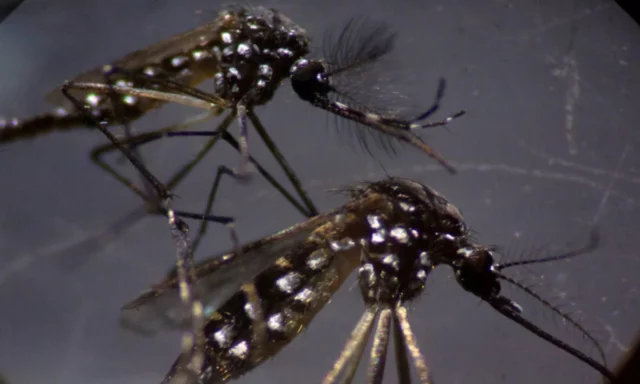Although it seems incredible, it is true; a recent study from the Laboratory of Neurogenetics and Behavior at Rockefeller University in New York reveals that there are people who act as a magnet for mosquitoes more than others.
If you are one of those people who does not care if you are inside your house, eating on a terrace or on the beach and those tiny insects bite you many times. Well, there is a scientific explanation for that. The team explains that mosquitoes follow our CO2 exhalations and body heat, but also body odor. On this last point, the scientists Leslie Vosshall and Maria Elena De Obaldía focused on the individual odor variations related to the skin microbiota.
This is how the study -recently published in the journal Cell- showed that the fatty acids that emanate from the skin can create an intoxicating perfume that mosquitoes cannot resist. “There is a very, very strong relationship between having large amounts of these fatty acids in your skin and being a magnet for mosquitoes”, said Vosshall, who is also chief scientific officer of the Howard Hughes Medical Institute.
In this way, some myths or urban legends are demolished that suggest that these annoying flying insects -because yes, they are annoying- stung more depending on the blood group, blood sugar level and even the consumption of garlic or bananas of the victims.
The study lasted 3 years
Vosshall and De Obaldía’s research took 3 years and was based on the results obtained after studying 8 people. For this, the study focused on the Aedes Aegypti mosquito, the main vector species of Zika, dengue, yellow fever, and chikungunya.
All 8 people were asked to wear nylon stockings over their forearms for at least 6 hours a day. Research participants repeated this process for several days. Over the next few years, the researchers tested the nylons against each other in every possible pairing through a round-robin-style “tournament”.
As explained by the Rockefeller University on its website, an olfactometer test built by De Obaldía was used. It was a Plexiglas chamber divided into 2 tubes, each of which ended in a box containing a stocking. The scientists placed Aedes Aegypti mosquitoes in the main chamber and watched as the insects flew down the tubes onto one or the other nylon.
Mosquitoes
Participant “33”: Mosquitoes’ poor victim
The most attractive target for Aedes aegypti was the subject named 33. This person was 4 times more attractive to mosquitoes than the next most attractive participant in the study. And amazingly, participant 33 was 100 times more attractive than the least attractive, the subject named 19.
Something that caught the attention is that it did not matter what test they carried out. The truth of the matter is that participant 33 always turned out to be the most attractive to the insects, which swarmed around him. “It is the kind of thing that excites me as a scientist. This is something real. This is not a play on words. It is a huge effect”, explained De Obaldia. The researchers categorized the participants as high-attractive or low-attractive to mosquitoes; then, they wondered what made them different.

Through chemical examination and analysis, they found that the former (high mosquito attractants) had 50 molecular compounds that were elevated in sebum (a moisturizing skin barrier). Not only that, these participants produced carboxylic acids at much higher levels than the less attractive volunteers. “These substances are found in sebum and are used by bacteria on our skin to produce our unique human body odor”, the study explains. To compare the data, they carried out a new experiment with 56 people, including participant 33, who again turned out to be the one who attracted the most mosquitoes.
Mosquitoes and their complex olfactory system
“Some subjects were in the study for several years, and we saw that if they were a mosquito magnet, they still were. Many things could have changed in the subject or in his behavior over that time, but this was a very stable property of the person”, indicated the scientist.
Her research partner claims that this study reflects the exquisitely complex olfactory system of Aedes aegypti. “This is a safety mechanism that female mosquitoes depend on to live and reproduce; without blood, they cannot do either. So she has a safety plan and a safety plan and a safety plan and she is attuned to these differences in the skin chemistry of the people she’s after”, says Vosshall.
Both Rockefeller University specialists hope that this work will inspire researchers to try other species of mosquitoes. But also to invest in how to achieve fewer mosquito bites with more friendly and responsible products with the environment.

